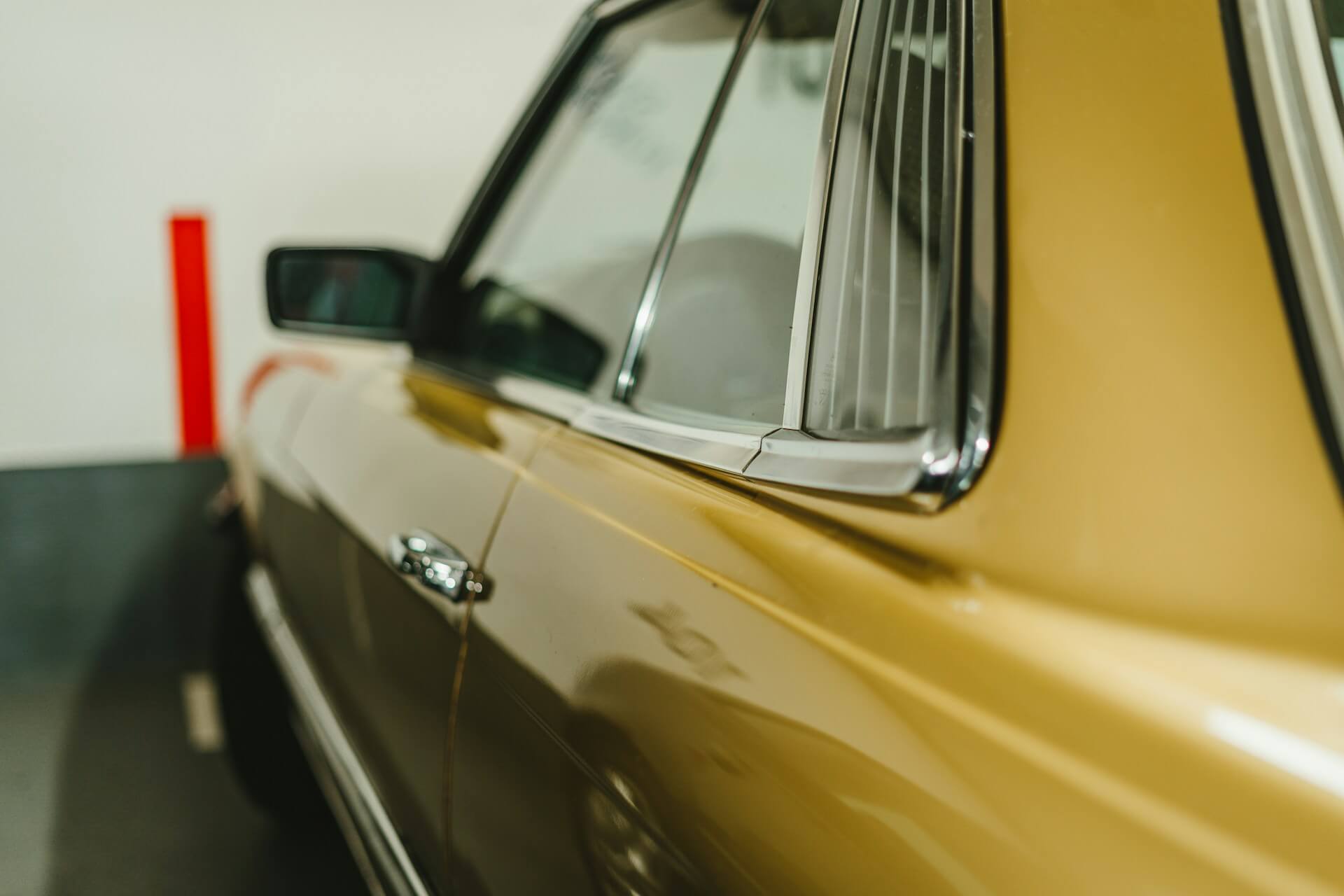
Refinishing your vehicle can be a rewarding experience, providing a fresh, new look and restoring its former glory.
However, the process is fraught with potential pitfalls that can lead to costly and time-consuming car paint errors. Whether you’re a seasoned professional or a DIY enthusiast, knowing what to avoid can save you significant headaches down the road.
In this article, we’ll explore the most common car refinishing mistakes and how to steer clear of them. From preparation missteps to application blunders, we’ve got you covered with expert advice and practical tips to ensure your vehicle looks its best.
Read on to learn how to avoid these common mistakes and make your car refinishing project a success.
Poor Surface Preparation
In the world of automotive refinishing, surface preparation is a critical step. Skipping or rushing this process can lead to poor paint adhesion, resulting in peeling, flaking, or bubbling. Here’s a list of common car refinishing mistakes you should avoid to achieve a professional finish:
- Inadequate Cleaning: Before applying any paint, ensure the surface is thoroughly cleaned. Dirt, grease, and other contaminants can prevent the paint from adhering properly. Use a high-quality degreaser and follow up with a thorough rinse to remove all residues.
- Neglecting Sanding: Sanding is essential for creating a smooth, even surface. Skipping this step or using the wrong grit sandpaper can lead to an uneven finish. Start with a coarser grit to remove imperfections and gradually move to finer grits for a polished surface.
- Skipping Primer: Primer is crucial for ensuring the paint adheres well and lasts longer. Skipping this step can result in a finish that chips easily. Always apply a quality primer and allow it to dry completely before moving on to the paint.
Avoiding these refinishing mistakes can help you achieve a flawless finish and ensure your refinishing project stands the test of time.
Incorrect Paint Application
Applying paint to your vehicle may seem straightforward, but several common mistakes can ruin your efforts. Understanding the right techniques and avoiding shortcuts will help you achieve a professional finish in your vehicle restoration project.
- Using the Wrong Type of Paint: Not all paints are created equal. Using the wrong type of paint for your vehicle can lead to disappointing results. Consult with professionals or research the best type of automotive paint for your specific needs. Websites like arpshop.ca offer a variety of options suitable for different applications.
- Inconsistent Spray Patterns: Maintaining a consistent spray pattern is key to achieving an even finish. Inconsistent spraying can result in streaks, runs, and uneven coverage. Practice your technique on a scrap piece of metal before working on your car to get a feel for the spray gun.
- Ignoring Drying Times: Patience is vital when refinishing your car. Rushing the drying process between coats can lead to issues like bubbling or an uneven finish. Always follow the manufacturer’s recommended drying times for each layer of paint.
By paying attention to these common car paint errors and taking your time, you can ensure your restoration project achieves a professional and lasting result.
Overlooking Environmental Factors
When it comes to vehicle restoration, overlooking environmental factors can be one of the most common mistakes.
The environment in which you work plays a significant role in the quality of your refinishing job, and ignoring these factors can compromise the outcome. Here are some key considerations:
- Temperature and Humidity: Extreme temperatures and high humidity can affect paint application and drying times. Aim to work in a controlled environment with moderate temperatures and low humidity to ensure optimal results.
- Dust and Contaminants: A clean workspace is essential for a flawless finish. Dust, dirt, and other contaminants can easily settle on wet paint, ruining the surface. Use a dust-free area and consider investing in protective equipment like tarps and air filters.
- Proper Ventilation: Paint fumes can be hazardous to your health. Ensure your workspace is well-ventilated to avoid inhaling harmful chemicals. Wearing a mask and protective gear is also recommended for added safety.
By paying attention to these environmental factors, you can significantly improve the quality of your restoration projects while avoiding common mistakes that could otherwise mar your hard work.
Neglecting Safety Measures
Ignoring safety precautions in automotive refinishing can lead to severe car refinishing mistakes and health risks. Prioritizing safety ensures a smooth and injury-free refinishing process. Here are some essential safety measures:
- Protective Gear: Always wear appropriate protective gear, including gloves, goggles, and a mask, to shield yourself from harmful chemicals and particles. Long-sleeved clothing and closed-toe shoes are also advisable.
- Proper Disposal: Improper disposal of paint and materials can harm the environment. Follow local regulations for disposing of hazardous materials to minimize your environmental impact.
- Equipment Maintenance: Regularly maintaining your equipment ensures it functions correctly and safely. Clean your spray gun and other tools after each use to prevent clogs and ensure they last longer.
By adhering to these safety guidelines, you can avoid common mistakes and promote a safer working environment. Prioritizing safety in refinishing not only protects you but also ensures the longevity and quality of your work.
Rushing the Process
Patience is a virtue, especially when it comes to automotive refinishing. Rushing through the process can lead to common mistakes that are costly and time-consuming to fix. Here are key aspects to keep in mind:
- Skipping Steps: Each step in the refinishing process is crucial. Skipping steps to save time often results in a subpar finish. Follow the recommended procedures carefully to achieve the best results.
- Inadequate Curing Time: Allowing adequate curing time for the paint is essential for durability and longevity. Rushing this step can lead to a finish that is more susceptible to damage. Be patient and allow the paint to cure fully before driving or exposing it to harsh conditions.
- Attention to Detail: Paying attention to small details can make a big difference in the final result. Take your time to ensure every aspect of the refinishing process is done correctly, from preparation to the final coat.
By avoiding these common mistakes and focusing on each critical step, you’ll ensure a high-quality refinishing job that stands the test of time.
Choosing the Wrong Products
Choosing the right products for your refinishing project is crucial to achieving a professional and durable finish. Investing in high-quality materials can make all the difference. Here are some key considerations:
- Subpar Paints and Primers: Using low-quality paints and primers can lead to poor adhesion and a short-lived finish. Invest in reputable brands known for their durability and performance to avoid common car paint errors.
- Inadequate Tools: The right tools make all the difference. Using subpar or incorrect tools can hinder your progress and affect the quality of your work. Investing in high-quality spray guns, sanders, and other essential equipment is essential for a successful outcome.
- Research and Recommendations: Do your homework before purchasing materials. Researching products and seeking recommendations from professionals can help you make informed decisions and avoid common pitfalls. This ensures that you use only the best products and tools for your project.
By paying attention to these factors, you can significantly improve the quality and longevity of your automotive refinishing work.
Conclusion
Refinishing your vehicle is a rewarding endeavor that can restore its appearance and value. By avoiding common mistakes, you can achieve professional results.
Take your time, invest in quality materials, and follow best practices to ensure your vehicle restoration looks its best.
Remember, a well-executed refinishing job not only enhances your vehicle’s aesthetics but also extends its lifespan. If you need further guidance, don’t hesitate to seek professional advice or visit resources for expert tips and quality products. Happy refinishing!

